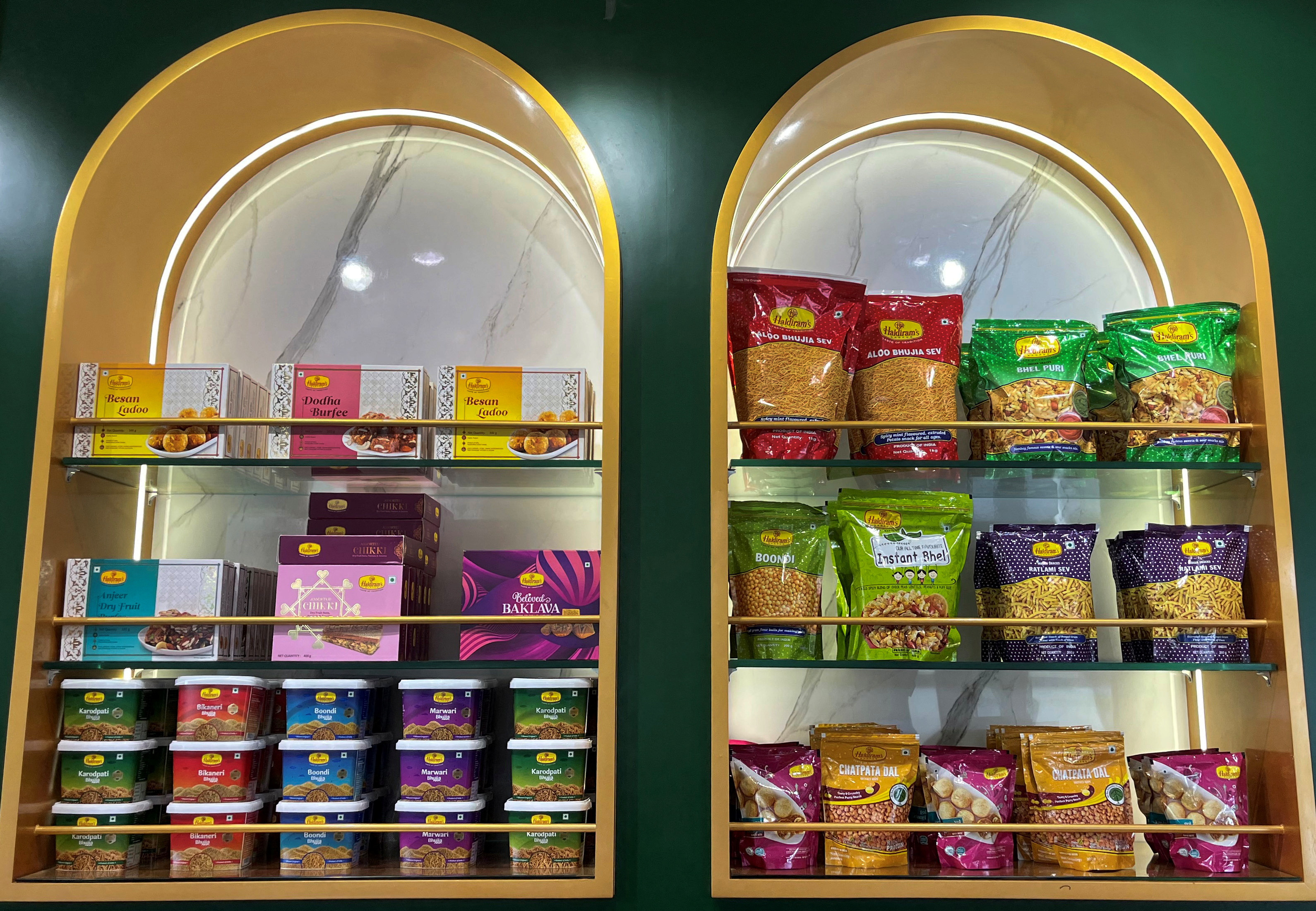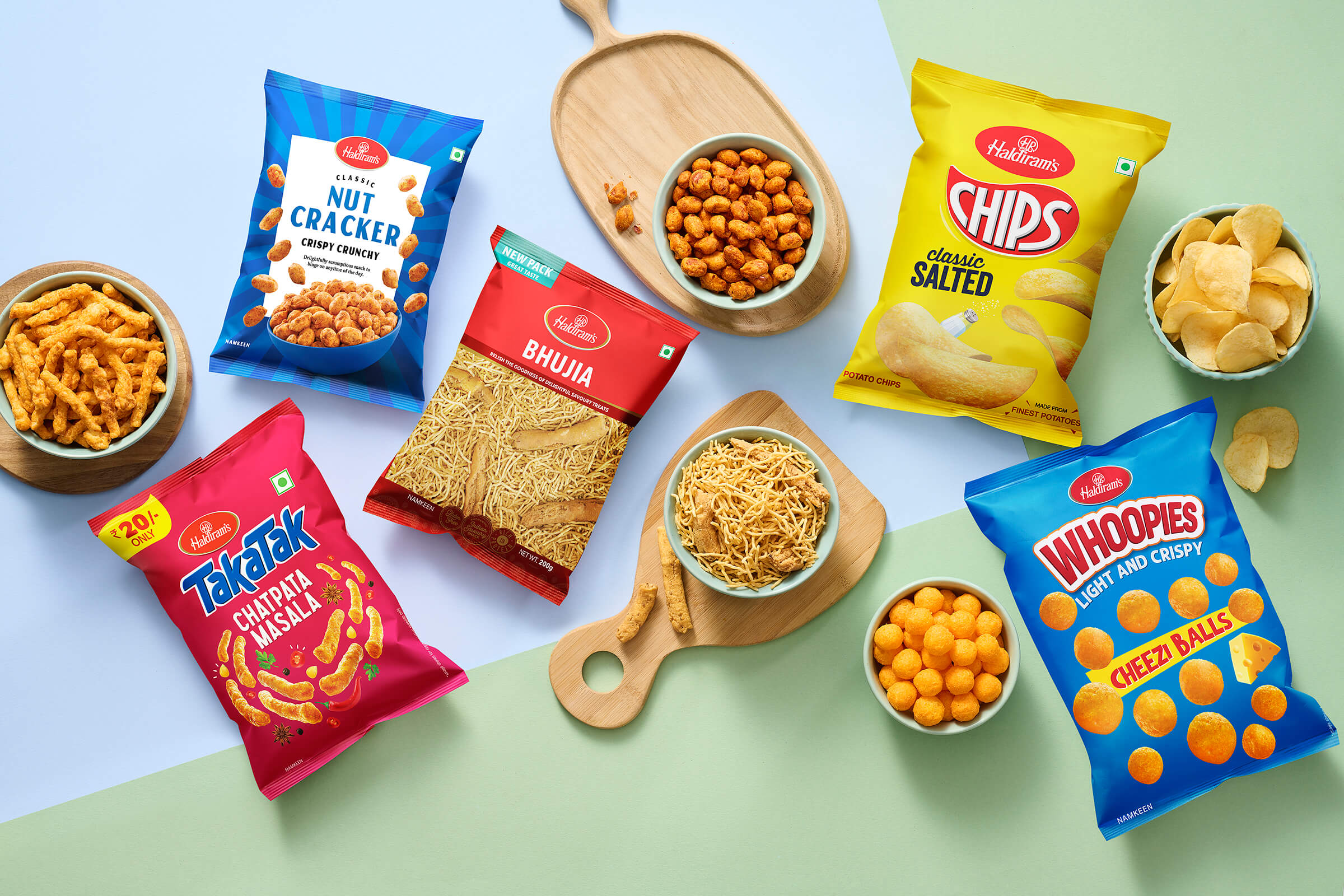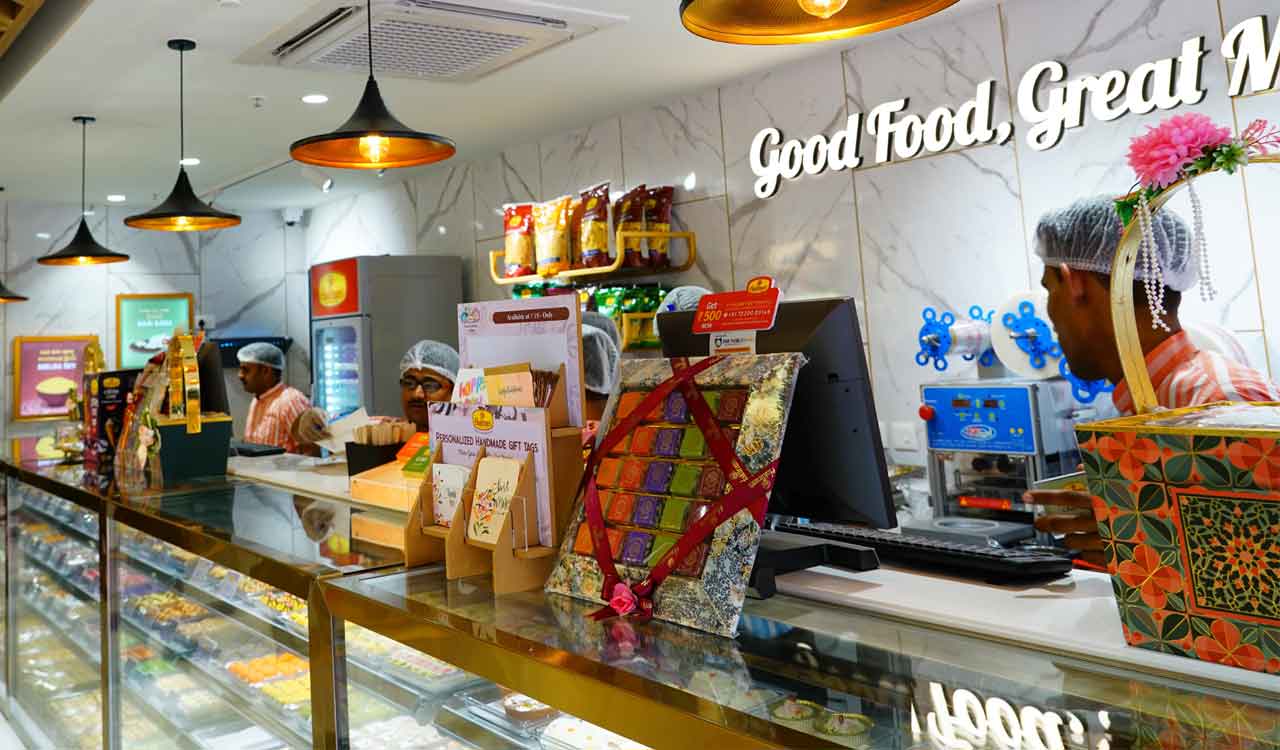FMCGs’ Interest in Haldiram’s Traditional Snack 2023

FMCGs’ Interest in Haldiram’s Traditional Snack 2023
This week, Haldiram’s, a well-known bhujia brand with roots in a modest Bikaner shop founded by Gangabishan ‘Bhujiawala’ Agarwal, made headlines as a prospective acquisition target for Tata Consumer, the fast-moving consumer goods (FMCG) division of the Tata group.
)
Although Haldiram’s and Tata Consumer both rejected the accusations, the latter company’s involvement in mergers and acquisitions is nothing new. Haldiram’s was in the news in 2019 because of a proposed partnership with American food giant Kellogg’s. These negotiations for a majority (51% interest) at a $3 billion valuation vanished into thin air.
According to projections by stockbroker Nuvama, Haldiram’s (including the Delhi and Nagpur businesses), which has a geographical indication (GI) designation for its distinctive flavour, has expanded between then and now at a compound annual growth rate of 15% with an FY23 topline of Rs 10,200 crore.
According to regulatory filings by the two corporations, the two entities’ aggregate top line for FY22 is Rs 8,870 crore.Tata Consumer, which does not already provide such meals and snacks, would have benefited from adding Haldiram’s goods, but according to industry sources, the estimated $10 billion valuation of the company is 10 times its FY22 revenues, which is simply too costly.

Bhujia has become a viable alternative to biscuits, according to Manoj Verma, chief operating officer of Bikaji Foods, which went public last year. If customers’ attention was previously focused on biscuits and all of its various variations, including cookies, creams, jim-jams, etc. Traditional delicacies like bhujia and namkeens are now vying for their customers’ attention.

Similar to cookies, price ranges range between Rs 5 and Rs 10 per unit at the starting level to Rs 55 and beyond per unit, according to experts. According to consulting firm Frost & Sullivan, the traditional or ethnic snacking market is worth Rs 18,100 crore and is expanding at a rate of roughly 15–16% annually.
Contrarily, biscuits are a larger segment with an estimated market value of Rs 45,000–50,000 crore and annual growth of 8–9%. It seems sense that FMCG businesses want a piece of the market.The demerger of the FMCG operations of Haldiram Foods International (Nagpur unit) and Haldiram Snacks (Delhi unit) into a newly established entity called Haldiram Snacks Food was authorised by the Competition Commission of India in April of this year.
Industry sources said that this firm would have been the subject of any acquisition discussions. Tata Consumer and Haldiram’s executives weren’t immediately available for comment.

Frost & Sullivan estimates that Haldiram’s has a market share of 38.5% of the Rs 18,100 crore, including the Nagpur and Delhi plants. Balaji is second with a market share of 9.6%, followed by Bikaji at about 9%, Bikanervala (Bikano) at 6%, and PepsiCo with a market share of 3.7%. The remaining participants in this market include Haldiram-Prabhuji (Kolkata), Prataap Snacks, DFM Foods, and other formally structured firms.
In the world of fast-moving consumer goods (FMCG), there is a constant quest for the next big thing. While global brands have dominated the market for decades, there’s a growing interest in traditional and regional snacks, and one name that stands out prominently in this category is Haldiram’s. This Indian brand has become a household name, not just in India but also among the Indian diaspora worldwide. The rise of Haldiram’s has caught the attention of FMCG giants, and they are eager to take a big bite of this traditional snack powerhouse. In this article, we’ll explore the reasons behind FMCGs’ interest in Haldiram’s and the potential implications of such partnerships.
Haldiram’s, originally founded in Bikaner, Rajasthan, in 1937, started as a small snack shop. Over the years, it has grown into one of India’s largest and most well-known snack and sweets manufacturers. The brand’s success is built on a foundation of high-quality, traditional Indian snacks that appeal to a wide audience. From its humble beginnings, Haldiram’s has expanded its product range to include a vast array of snacks, sweets, and even ready-to-eat meals. Today, the brand has a strong global presence and is synonymous with authentic Indian flavors.

India is one of the world’s largest snack markets, with a diverse and evolving consumer base. The Indian snack industry is valued at billions of dollars, and it continues to grow steadily. FMCG companies recognize this immense market potential and view Haldiram’s as a gateway to tap into this lucrative market. By partnering with Haldiram’s or acquiring a stake in the brand, FMCGs can gain access to a vast customer base and distribution network.
Haldiram’s is renowned for its commitment to authentic Indian flavors and high-quality ingredients. The brand has built a strong reputation for trust and reliability among consumers. FMCG companies understand that this trust is invaluable in the competitive Indian market, and by associating with Haldiram’s, they can leverage this authenticity to boost their own brand image.
Haldiram’s success is deeply rooted in its understanding of regional tastes and preferences. India is a diverse country with distinct culinary traditions in each region. Haldiram’s has mastered the art of catering to these regional preferences, offering a wide range of snacks that cater to diverse palates. FMCGs recognize the importance of this regional expertise and view Haldiram’s as a valuable source of insights and knowledge.
Haldiram’s has not limited its presence to India but has expanded globally, serving the Indian diaspora and attracting a diverse set of consumers worldwide. FMCGs see the potential to leverage Haldiram’s existing international distribution channels to introduce their products to new markets or enhance their presence in existing ones.

One of the key concerns is whether the authenticity and quality of Haldiram’s products will be maintained post-acquisition or partnership. Consumers are loyal to Haldiram’s because of its traditional flavors and quality, and any compromise in these aspects could result in a loss of trust.
Haldiram’s success is built on traditional recipes and flavors. FMCGs will need to strike a delicate balance between preserving these traditional elements and introducing innovative products or marketing strategies to cater to changing consumer preferences.
FMCGs entering into partnerships with Haldiram’s need to be culturally sensitive and respect the brand’s heritage. Cultural missteps can lead to backlash and harm the brand’s reputation.
The interest of FMCGs in Haldiram’s is a testament to the brand’s enduring appeal and the immense potential of traditional and regional snacks in the global market.
While these partnerships have the potential to benefit both parties, they also come with challenges that need to be navigated carefully.

Ultimately, consumers will be the judges of whether the essence of Haldiram’s remains intact, or if it undergoes a transformation in the hands of FMCG giants. Regardless, the story of Haldiram’s serves as a compelling case study of how traditional brands can capture the attention of the FMCG industry and remain relevant in an ever-evolving market.




